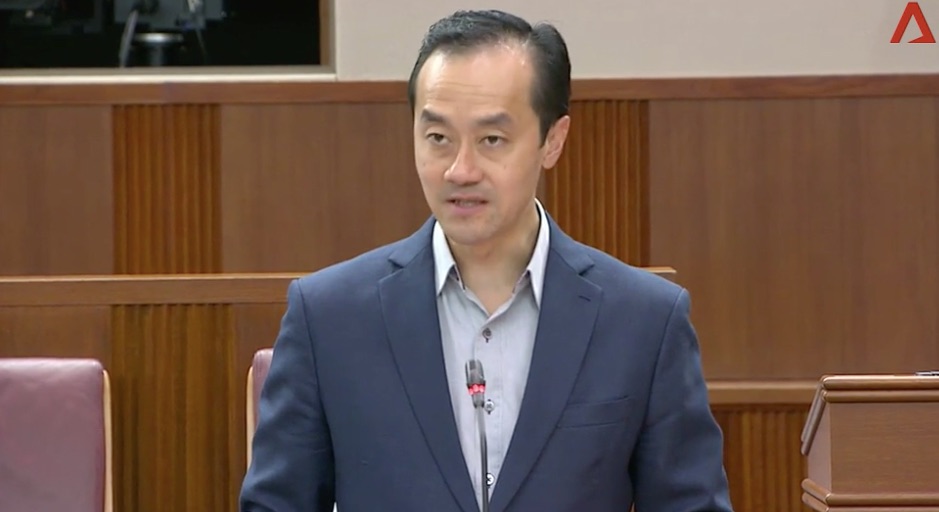JAKARTA, INDONESIA — After being rocked by the three-day mass protests against the controversial job creation law (UU Cipta Kerja), Indonesia witnessed yet another protest on Thursday (15 October) as President Joko Widodo received the final draft of the law.
The final version of the much-debated regulation–which the parliament enacted on 5 October–was handed over to the president the day prior.
Different versions of the final document once raised questions
The final draft of the job creation law had two versions when it was enacted. The parliament confirmed the 812-page document on 13 October.
However, there was a 1,035-page file that the parliament also confirmed. Both documents were brought during the ratification of the bill.
In a text message TOC received on Thursday afternoon, Sukamta, a politician from the Social Justice Party (PKS) stated that his faction had yet to provide a statement regarding the different versions as they wanted to avoid the spread of false news.
“We are still reviewing the draft. The file that has been circulated has some differences in the numbers of pages. The parliament chief said that it is about the paper and font’s size,” he said in a WhatsApp chat.
The 812-page version has 24 changes in the word “and” into “and/or”, Detik reported.
How do politicians see the job creation law?
Sukamta opined that the law will benefit investors and pave the way for liberalisation in the education and mineral resources sectors. A major concern that comes with the bill, however, is the shrinking of labour rights.
In an energy cluster in the bill, for example, the government will provide an incentive by freeing coal royalty for coal miners that focus on the downstream sector as stipulated in Chapter 128 A.
Such an incentive can disrupt the country’s income. However, a high-ranked official at the Energy and Mineral Resources Ministry (ESDM) rebutted that claim, saying that coal downstream sector can boost a region’s income and open a job opportunity.
The main sources of protest against the bill rely on some chapters on workers’ rights.
Ahmad Baidowi, a politician from the United Development Party (PPP), stated that the reduction of the compensation for laid-off workers aims to ensure that all workers receive their rights.
Under the omnibus law on job creation, compensation for laid-off workers is reduced from 32 times salary to 19 times salary and six times from the government’s scheme of laid-off workers (JKP).
“Data from the Ministry of Manpower in 2019 revealed that only 7 per cent of laid-off workers receive their rights under the old law,” the parliament member told TOC on Wednesday, claiming that not all companies pay compensation 32 times of salary due to financial trouble or bankruptcy.
When asked about how factions at the People’s Representative Council (DPR), Ahmad stated that during the process of converting the bill into the regulation, all factions agree.
“It is their political statement when they voice their opposition, and it is common in politics,” he added.
The process of turning the draft into the law also raises questions as it lacks public participation, Sukamtan and other experts stated.
“As stipulated in the DPR’s Code of Conduct, the enactment of the bill must be carried out by handing over the bill and the signing during the plenary session,” said Sukamta in a written statement sent to TOC.
Migrant workers on job creation law
Hariyanto from the Indonesian Migrant Workers’ Union (SBMI) told TOC that migrant workers were not involved during the formulation of the bill before being converted into the law.
The omnibus law on job creation disrupts the management of migrant workers’ placement companies (P3MI). Under the new law, the central government has the authority to give permits to P3MI, revoking that of the Ministry of Manpower.
“Such a new procedure disrupts the management of P3MI. We see that the placement procedure of vessel crewmembers overlaps, as there are three institutions hold the permits for manning agencies (Ministry of Manpower, Ministry of Transportation, and Ministry of Trade),” Hariyanto said, adding that there are many fraudulent manning agencies that recruit people.
Chapter 57 in the new law revoked the role of the Indonesian Migrant Workers’ Protection Agency (BP2MI) in granting a recommendation for recruitment agencies.
“The law slashes red tape, so it is good. However, the establishment of recruitment agencies takes time … We need to make sure whether there is a training centre, and so on.
“The chapter also has multiple interpretations regarding the statement that the data update of P3MI should be within 30 days. Is it after the law is enacted or every 30 days?” The activist questioned.








